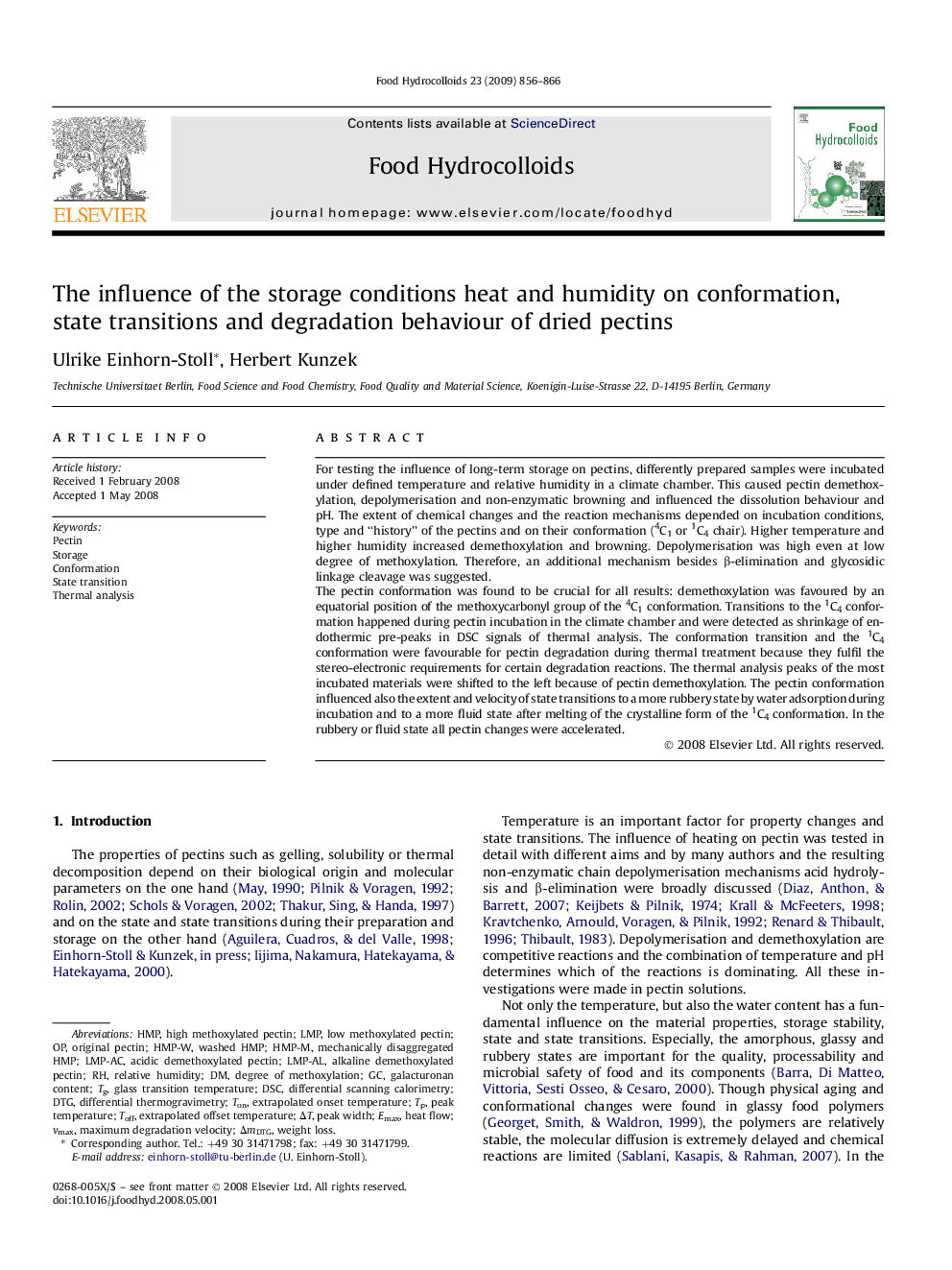| Article ID | Journal | Published Year | Pages | File Type |
|---|---|---|---|---|
| 605380 | Food Hydrocolloids | 2009 | 11 Pages |
For testing the influence of long-term storage on pectins, differently prepared samples were incubated under defined temperature and relative humidity in a climate chamber. This caused pectin demethoxylation, depolymerisation and non-enzymatic browning and influenced the dissolution behaviour and pH. The extent of chemical changes and the reaction mechanisms depended on incubation conditions, type and “history” of the pectins and on their conformation (4C1 or 1C4 chair). Higher temperature and higher humidity increased demethoxylation and browning. Depolymerisation was high even at low degree of methoxylation. Therefore, an additional mechanism besides β-elimination and glycosidic linkage cleavage was suggested.The pectin conformation was found to be crucial for all results: demethoxylation was favoured by an equatorial position of the methoxycarbonyl group of the 4C1 conformation. Transitions to the 1C4 conformation happened during pectin incubation in the climate chamber and were detected as shrinkage of endothermic pre-peaks in DSC signals of thermal analysis. The conformation transition and the 1C4 conformation were favourable for pectin degradation during thermal treatment because they fulfil the stereo-electronic requirements for certain degradation reactions. The thermal analysis peaks of the most incubated materials were shifted to the left because of pectin demethoxylation. The pectin conformation influenced also the extent and velocity of state transitions to a more rubbery state by water adsorption during incubation and to a more fluid state after melting of the crystalline form of the 1C4 conformation. In the rubbery or fluid state all pectin changes were accelerated.
